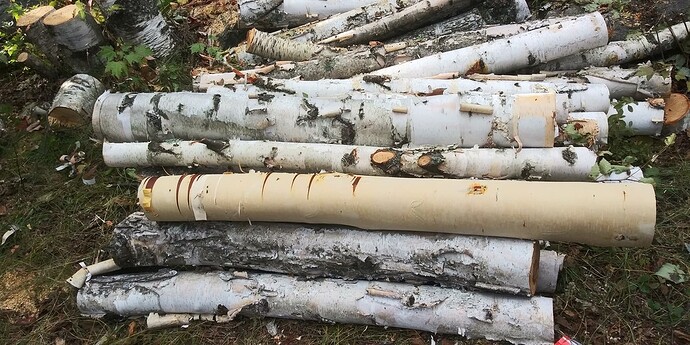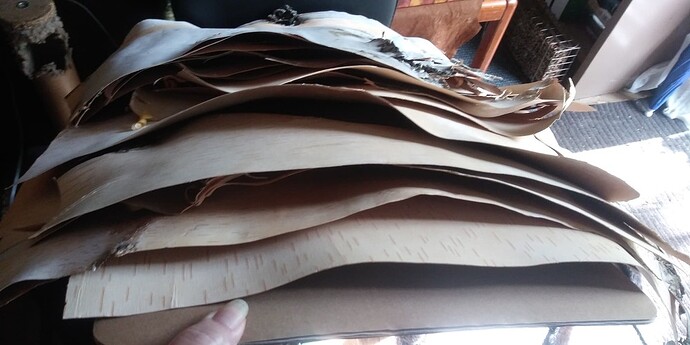Hello, everyone!
Boy do I loathe “introducing myself”, but here I am. I’ve literally been standing in my kitchen all day, pouring over posts and photos and designs, and my head is spinning!
MY brand new GF is currently a giant paperweight on my living room floor, bcz I’m waiting for a the desk I ordered for it to arrive; so I’m trying to get my bearings while I wait ever-so-impatiently.
I’ve been eyeballing GF for months, and a surreptitious event was the catalyst to my investment:
my landlords cut down a few paper birches, outside my back door (which broke my heart TBH)- and the arborists gave me permission to “peel the trees”!
This was the first…but not the last in the pile I raided
and what I’ve ended up with is simply…extraordinary:
I harvested 3 sheets from every cut piece: the papery white outer bark; the parchment-like middle layer; and the thicker veneer from the innermost layer.
I’ve been using birch bark for a variety or artworks, crafts, creative endeavors for decades… but the thought of engraving on it has me salivating.
I’d like to engrave on both the natural bark “veneer”, and on the bark I use to veneer onto [wood] boxes-
and while I am all for “trial by fire” and learning by doing,
(I’m generally disallowed earth-moving equipment and incendiary devices, but managed to slip a laser past the sentries ![]() )
)
AND I’d rather not actually need to call the fire department,
so I’m wondering if any of you AMAZING artists and creators and Masters of the Forge might have any tips on settings to use on natural <1mm thick birch bark. Because I’ve got roughly 7-8 pounds of it, and don’t want to waste an inch ![]()
I’d be eternally grateful.
Also…not butt-kissing, but really…you folks have created some extraordinary things; I am in awe. And I LOVE that you all so freely & happily talk and share, tips & tricks, and info, and ideas, ane experience and knowledge…WOW .
It’s truly inspiring Thank you so much, already!




 If I’d had something big enough I may have done; but then I was having nightmares of the thing crashing to the floor LOL BUT my desk came a day early!! Yay!
If I’d had something big enough I may have done; but then I was having nightmares of the thing crashing to the floor LOL BUT my desk came a day early!! Yay!